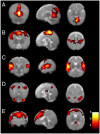When shapes are more than shapes: perceptual, developmental, and neurophysiological basis for attributions of animacy and theory of mind
- PMID: 37744598
- PMCID: PMC10513434
- DOI: 10.3389/fpsyg.2023.1168739
When shapes are more than shapes: perceptual, developmental, and neurophysiological basis for attributions of animacy and theory of mind
Abstract
Among a variety of entities in their environment, what do humans consider alive or animate and how does this attribution of animacy promote development of more abstract levels of mentalizing? By decontextualizing the environment of bodily features, we review how physical movements give rise to perceived animacy in Heider-Simmel style animations. We discuss the developmental course of how perceived animacy shapes our interpretation of the social world, and specifically discuss when and how children transition from perceiving actions as goal-directed to attributing behaviors to unobservable mental states. This transition from a teleological stance, asserting a goal-oriented interpretation to an agent's actions, to a mentalistic stance allows older children to reason about more complex actions guided by hidden beliefs. The acquisition of these more complex cognitive behaviors happens developmentally at the same time neural systems for social cognition are coming online in young children. We review perceptual, developmental, and neural evidence to identify the joint cognitive and neural changes associated with when children begin to mentalize and how this ability is instantiated in the brain.
Keywords: Heider and Simmel; agency; animacy; cognitive development; default-mode network; motion perception; social cognition; theory of mind.
Copyright © 2023 Torabian and Grossman.
Conflict of interest statement
The authors declare that the research was conducted in the absence of any commercial or financial relationships that could be construed as a potential conflict of interest.
Figures






Similar articles
-
No evidence that monkeys attribute mental states to animated shapes in the Heider-Simmel videos.Sci Rep. 2021 Feb 4;11(1):3050. doi: 10.1038/s41598-021-82702-6. Sci Rep. 2021. PMID: 33542404 Free PMC article.
-
Perceiving animacy from kinematics: visual specification of life-likeness in simple geometric patterns.Front Psychol. 2023 Jun 2;14:1167809. doi: 10.3389/fpsyg.2023.1167809. eCollection 2023. Front Psychol. 2023. PMID: 37333577 Free PMC article. Review.
-
The attribution of animacy and agency in frontotemporal dementia versus Alzheimer's disease.Cortex. 2017 Jul;92:81-94. doi: 10.1016/j.cortex.2017.03.019. Epub 2017 Apr 8. Cortex. 2017. PMID: 28458182 Free PMC article.
-
Judging social interaction in the Heider and Simmel movie.Q J Exp Psychol (Hove). 2019 Sep;72(9):2350-2361. doi: 10.1177/1747021819838764. Epub 2019 Mar 28. Q J Exp Psychol (Hove). 2019. PMID: 30827187
-
Animacy and the prediction of behaviour.Neurosci Biobehav Rev. 2022 Sep;140:104766. doi: 10.1016/j.neubiorev.2022.104766. Epub 2022 Jul 4. Neurosci Biobehav Rev. 2022. PMID: 35798127 Review.
Cited by
-
Two Sides of Theory of Mind: Mental State Attribution to Moving Shapes in Paranoid Schizophrenia Is Independent of the Severity of Positive Symptoms.Brain Sci. 2024 May 2;14(5):461. doi: 10.3390/brainsci14050461. Brain Sci. 2024. PMID: 38790440 Free PMC article.
-
Perception of animate motion in dogs.Front Psychol. 2025 Jan 3;15:1522489. doi: 10.3389/fpsyg.2024.1522489. eCollection 2024. Front Psychol. 2025. PMID: 39830849 Free PMC article. Review.
References
Publication types
LinkOut - more resources
Full Text Sources

